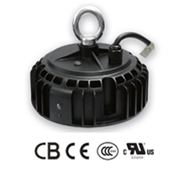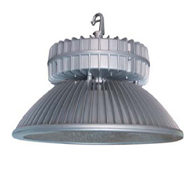 The CSIP (Ministry of Industry and Information Technology Software and Integrated Circuit Promotion Center) pointed out in its November 2012 study:
The CSIP (Ministry of Industry and Information Technology Software and Integrated Circuit Promotion Center) pointed out in its November 2012 study: The electronic information industry has entered the "post-PC era" or the era of mobile Internet as Jobs described. Mobile smart terminals represented by smart phones and tablet computers have become the core drivers of semiconductor market growth. This report will focus on analyzing the demand for chips in applications such as mobile phones, digital televisions, white goods and small household appliances in China.
1. Market demand for mobile phone chips With the rapid development of mobile internet, mobile smart terminals represented by smart phones are developing rapidly. The year 2012 was a year of global economic downturn. Many industries stopped growing or even regressed, but smartphones exploded in 2012. IHS analysis predicts that China's smartphone capacity in 2012 is expected to reach 181 million. By 2015, smart phones in China's mobile phone market will account for over 85% of the market share. Therefore, the smart phone market is a huge and potential market.
TD-SCDMA chip will reach 120 million in 2014, and WCDMA chip shipment is expected to reach nearly 200 million in 2014, taking into account the huge capacity of WCDMA in the global market and the user's international roaming demand, while supporting TD-SCDMA and WCDMA's multi-mode terminal chip market has huge opportunities.
2. The domestic TV (set-top box) chip market needs the annual output of 120 million color TV sets in mainland China. It needs to purchase about 110 million TV SOC master chips from Taiwan-funded and foreign-funded chip companies, of which Taiwan’s MediaTek is a major supplier, accounting for approximately 90% of mainland China's TV chip purchases. China's domestic chip company, Huaxia Microelectronics, is currently able to provide such chips, but it is still in a small batch trial period and has not yet achieved large-scale industrialization; Hass Semiconductor's digital TV multi-chip smart TV program has been mass-produced by color TV manufacturers. The single-chip SOC master chip solution is still under development. At present, most of the digital TV SOC master chips used in the Chinese market are purchased from Taiwan-funded enterprises, which provides market opportunities for domestic chip companies to develop 'import substitution' products.
In terms of set-top box chips, according to the CSIP's corporate survey and industry assessment, the demand for China's set-top box SOC main chip is about 140 million in 2012, including about 40 million sets of SOC main chips for cable set-top boxes; about 20 million SOC main chips for ground set-top boxes The satellite set-top box SOC main chip about 60 million; IP TV set-top box SOC main chip about 20 million. From the supply level analysis, at present, China's low-end set-top box chip has basically achieved localization. Although China’s domestic chip companies’ products have accounted for about 60% of the domestic market, they are mainly targeted at the mid- to low-end set-top box market. Their product features are relatively single, and companies that can achieve stable scale mass production and sales are still relatively small; The market size of 100 million tablets only accounts for 10% of the market, and chips in some areas still rely on imports. In the cable set-top box and IP set-top box, the local Hass occupies a relatively high market share, in the satellite set-top boxes and ground set-top boxes, suppliers to China's Taiwan region and European and American companies.
In addition, in 2012, the speed of AVS/+ applications became the market demand for AVS/+ codec chips. On March 18, 2012, the State Administration of Radio, Film and Television and the Ministry of Industry and Information Technology jointly established the “AVS Technology Application Joint Promotion Working Group†to jointly promote the application of the AVS standard in high-definition television and 3D television services. Under this organization, a group of joint advancing work teams led by CCTV and Peking University was established to jointly promote the commercial application of AVS encoding and decoding technology on the CCTV 3D program's official broadcast on January 1, 2013. According to the data released by the SARFT, there are 430 million households out of a population of 1.34 billion in China, of which cable television covers 180 million and satellite and terrestrial television cover 250 million. According to the SARFT's plan, AVS/+ will be used first in the direct broadcast satellite market, and according to the Ministry of Industry and Information Technology's "terrestrial television receiver technical specifications", the terrestrial television market must support AVS. Therefore, the total size of the AVS/+ target market is at least 250 million. In addition, the AVS standard has been adopted by Laos, Cambodia, Cuba, Kyrgyzstan, and other countries. As the country’s rise and influence increase, the popularity of AVS standards in foreign countries will increase, eventually forming a population of hundreds of millions. Large overseas market. With the popularity of AVS/+ at home and abroad, it is expected that the market will grow by more than 50% in the next five years, and eventually will form a decoder chip market with an annual demand of more than 20 million.
3. Market demand for white goods and small household appliances China is the world's largest producer of white goods (refrigerators, air conditioners, washing machines) and small household appliances (rice cookers, microwave ovens, and induction cookers). With the increase in the level of intelligence in white goods and small home appliances and the continuous upgrading of product structure, the demand for main control chips from domestic white goods and small home appliances will continue to grow, and its growth rate will be significantly higher than the global level. The survey found that the current demand for white goods in the white goods is the largest air-conditioning products, a typical market mainstream air-conditioning products will use 8 chips, including 2 MCU as the main control chip; in white household appliances and small household electrical appliances All MCUs are used as the main control chip; the proportion of total chip costs for white goods and small household appliances in the total cost of the whole machine is below 5%.
In the outdoor lighting section, the global urban transformation, urban construction, residential construction and road construction for market demand of high-power, high-brightness, energy-saving LED driver power supply is extremely large. Isolated Programmable LED Driver no need of Optocoupler and side current control circuit to realize isolating constant-current output. The circuit structure is very simple.


The advantage of MOSO isolated programmable Industrial Light LED Driver is small
input/output capacitance, small output wave, isolated output, high power
factor, high current precision and high reliability. Fixed output Industrial Light power supply has output open-circuit
protection, over-voltage protection and short-circuit protection.
Dimmable Industrial Light LED Driver built in 2-in-1 dimming and auto-react:0-10Vdc, PWM signal, dali control is optional.
Architecture and industrial Light LED Driver adopt Soft-switching patented technology, high efficiency up to 93%.
Programmable High Bay LED Driver
Programmable High Bay LED Driver, Isolated Programmable LED Driver,Programmable LED Driver,Programmable High Bay Light LED Driver
Moso Electronics , https://www.mosoleddriver.com